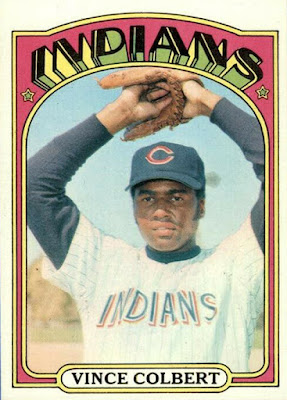 |
| 1978 Topps #400, Nolan Ryan |
So classic and time-honored is this pose that throughout the decades you'll find cup-of-coffee pitchers, journeyman pitchers, all-stars, and even Hall-of-Famers putting their stamp on it.
But something is a little fishy in Pitcherville. And if you look closely at some of the images, you're bound to notice it:
 |
| 1968 Topps #139, Chris Short |
The absence of a baseball in that pitching hand.
At first you might think, Okay, they're just posing for a baseball card, so it's fine.
But then you think about it some more:
They're on a baseball field, for crying out loud! Surely there's a baseball nearby.
So what gives?
Well, first let's note that there were pitchers who at least put forth the effort to hide their pitching hand and make things look authentic.
Sometimes they'd do it by turning the back of their glove to you.
 |
| 1966 Topps #350, Mel Stottlemyre |
Good job there, Mel.
If they really wanted to be careful, they'd pull that glove wayyy behind their head and look innocently away from the camera, like Mike Paul here.
 |
| 1970 Topps #582, Mike Paul |
And Doyle Alexander was so smart that he simply made sure his wind-up finished out of camera range.
 |
| 1979 Topps #442, Doyle Alexander |
But it's important now to provide a sampling of the miscreants—the brash guys who simply didn't care about committing pitching pose fraud. This activity was so prevalent that I had no problem finding a representative example from 15 straight years of Topps cards. You can find even more examples on your own.
 |
| 1965 Topps #174, Joe Jay |
Joe Jay, clearly guilty.
 |
| 1966 Topps #12, John Tsitouris |
John Tsitouris almost hid it well enough. But no.
 |
| 1967 Topps #221, Woody Fryman |
An All-Star Rookie should do better than that, Mr. Fryman.
 |
| 1968 Topps #324, Jim Nash |
Jim Nash, that airbrushed baseball cap isn't distracting us from the truth.
 |
| 1969 Topps #599, John Boozer |
John Boozer. I mean. . .
 |
| 1970 Topps #77, Frank Linzy |
Frank Linzy, you've got to try harder.
 |
| 1971 Topps #631, Eddie Fisher |
Eddie Fisher, not good enough.
 |
| 1972 Topps #84, Vince Colbert |
Come on, Vince.
 |
| 1973 Topps #411, Ray Corbin |
Ray Corbin can't fool us.
 |
| 1974 Topps #37, Dave Sells |
Dave Sells: Inconclusive, but suspicious.
 |
| 1975 Topps #428, Dave Hamilton |
Dave Hamilton couldn't be much more obvious.
 |
| 1976 Topps #51, Ray Burris |
Ray Burris? Not trying.
 |
| 1977 Topps #28, Woodie Fryman |
Woodie Fryman, this is your second offense (see 1967 card above).
Changing your name from "Woody" to "Woodie" didn't fool anyone.
And this time you have disgraced Les Expos and all of Canada.
Changing your name from "Woody" to "Woodie" didn't fool anyone.
And this time you have disgraced Les Expos and all of Canada.
 |
| 1978 Topps #233, Dick Pole |
Dick Pole. Guilty.
 |
| 1979 Topps #437, Rick Williams |
On your rookie card, Rick? For shame.
But don't despair. Not all pitchers are such scofflaws. There were a few good eggs out there who, before taking their pose, thought about the impressionable, bubble gum-chewing, card-collecting kids out there, looked around for a teammate, and said, "Hey, toss me a ball, will ya?"
 |
| 1957 Topps #21, Frank Sullivan |
Atta boy, Frank.
 |
| 1965 Topps #58, Fred Talbot |
Well done there, Fred.
 |
| 1966 Topps #97, Jim Merritt |
Jim went with a used baseball for extra realism.
 |
| 1977 Topps #144, Bruce Sutter |
 |
| 1980 Topps #243, Jerry Augustine |
Jerry Augustine, leading the way into the 1980s.
 |
| 1982 Fleer #27, Fernando Valenzuela |
Fernando's got a baseball in that left hand. And he's smiling because it feels good to do the right thing.
For all you young pitchers out there who aspire to have your image captured on cardboard one day, do the right thing, too.
For all you young pitchers out there who aspire to have your image captured on cardboard one day, do the right thing, too.
(Thanks to the internet for providing me with many of these images)






















